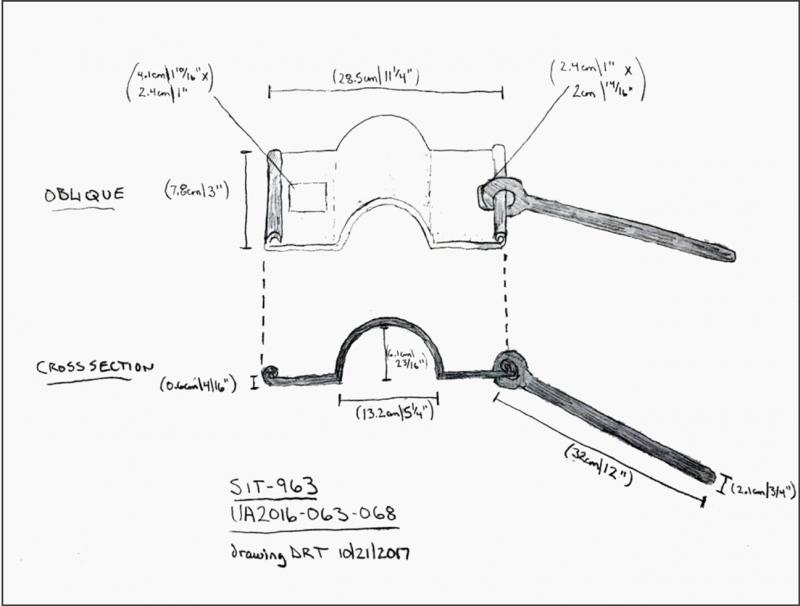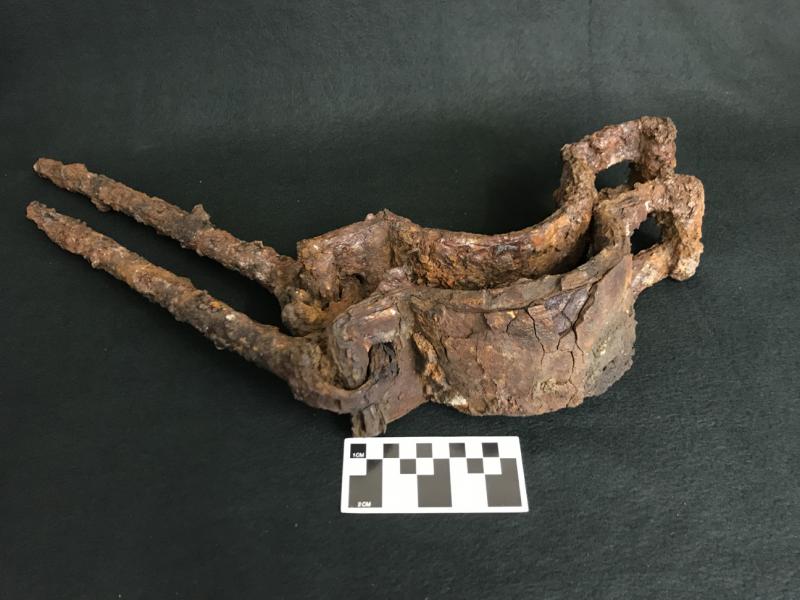McMahan Consulting
McMahan Consulting
ugruk
Neva trunnion caps
In 2016, a pair of trunnion caps / brackets (UA2016-063-068) from a cannon carriage were discovered eroding from the root system of a large spruce tree several meters above the beach. They rested directly upon two Russian axes. The elevation of the trunnion caps, along with nearby copper sheathing and other axes, coincides with the elevation of the upper tidal limit in 1813 prior to uplift. Their location is in downstream alignment with the prevailing current from the estimated wreck location of the NEVA. Our interpretation is that materials around the cove (trunnion caps, copper sheathing, axes, iron bar stock, etc.) were salvaged in the aftermath of the wreck and cached for later recovery. The only question that remains is whether the ship’s materials were cached by the survivors themselves or by later visitors to the site.
The rectangular caps measure 7.8cm (3") in width, 28.5cm (11¼") in length, and were nested together in a parallel arrangement. Attached through an opening in each is a 32cm (12") long pin measuring ¾"/2.1cm in diameter. These were used attach the hardware to a gun carriage. Internal diameter of the half-round brackets is 13.2cm (5¼"). Both caps / brackets exhibit localized slag-like concretions that suggest that the hardware was removed from the carriage by fire. During one early salvage expedition Shalkop (1979:42) reported "the waves were once so strong they even cast up two carronades." This hardware indicates that at least one cannon was successfully recovered from the site.
Description by D. McMahan and D. Thompson, 2018.
Field Drawing / Trunnion Caps
Copyright 2020 McMahan Consulting. All rights reserved.
McMahan Consulting
ugruk

